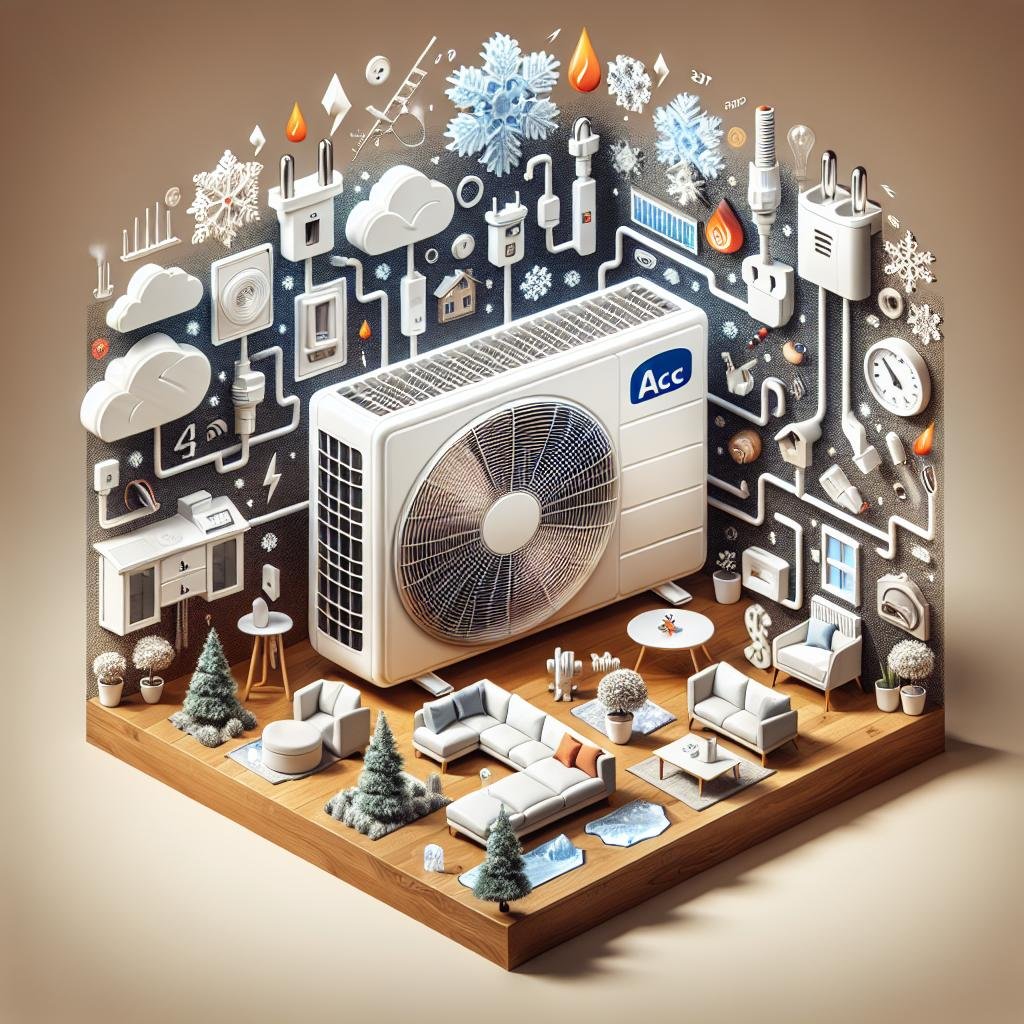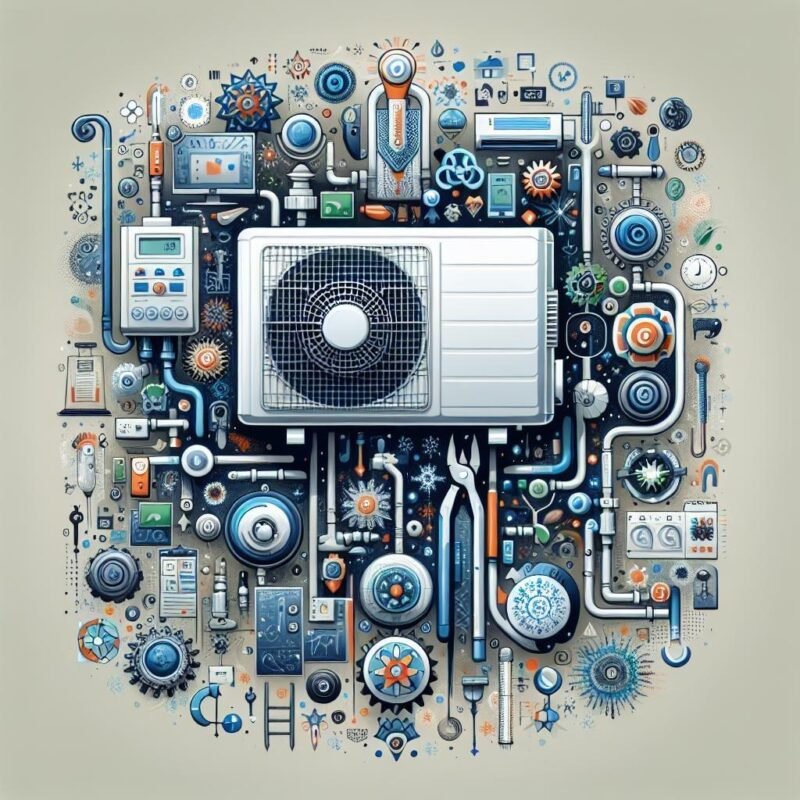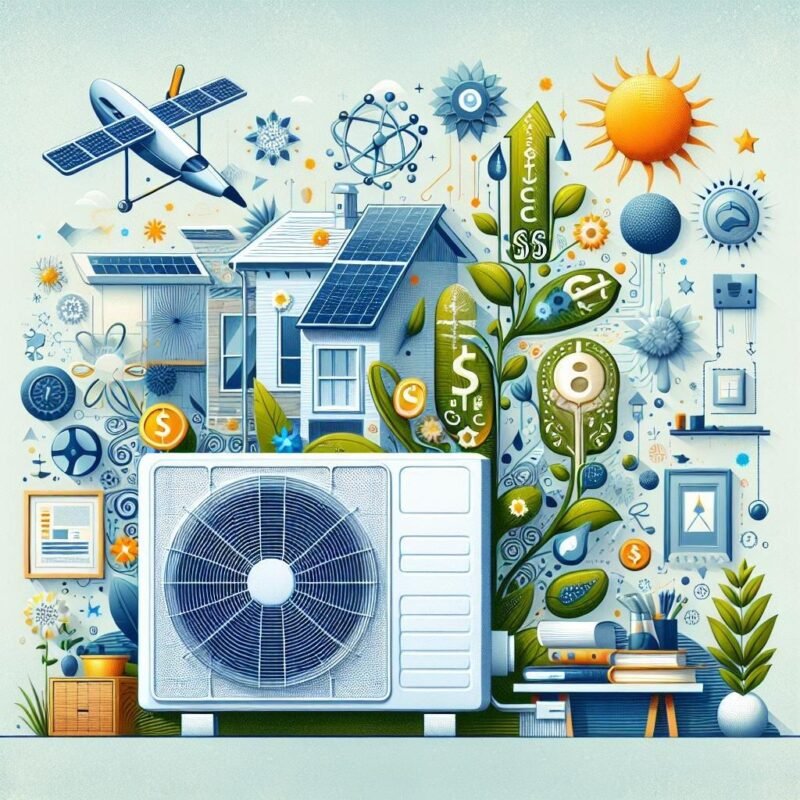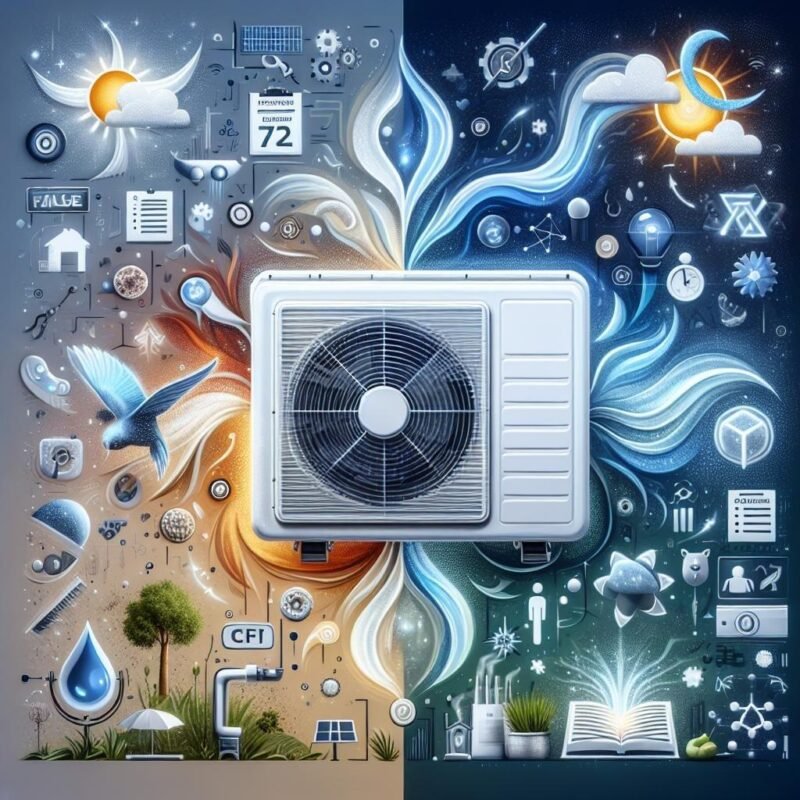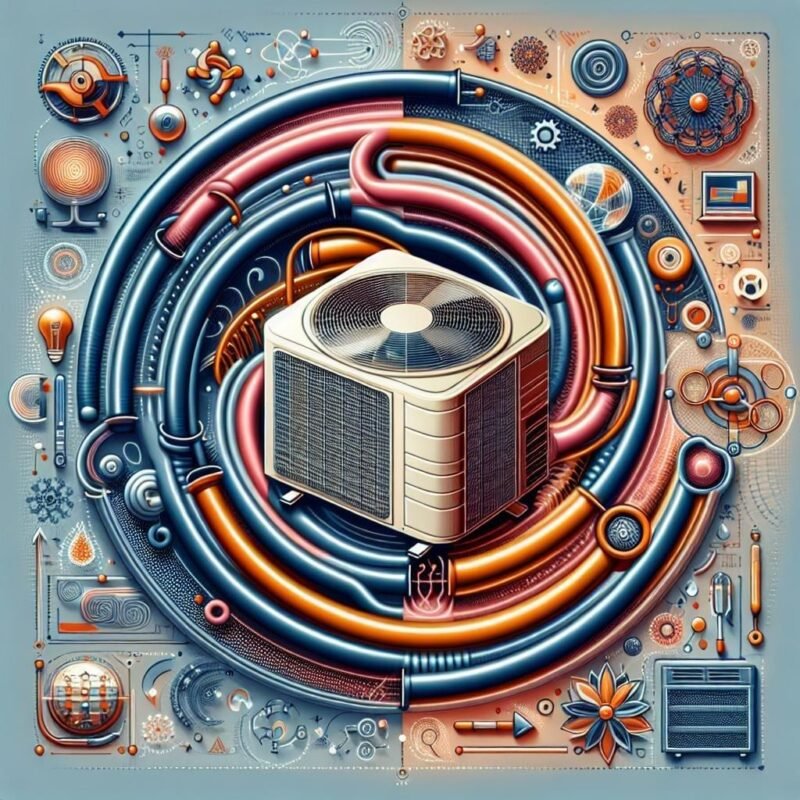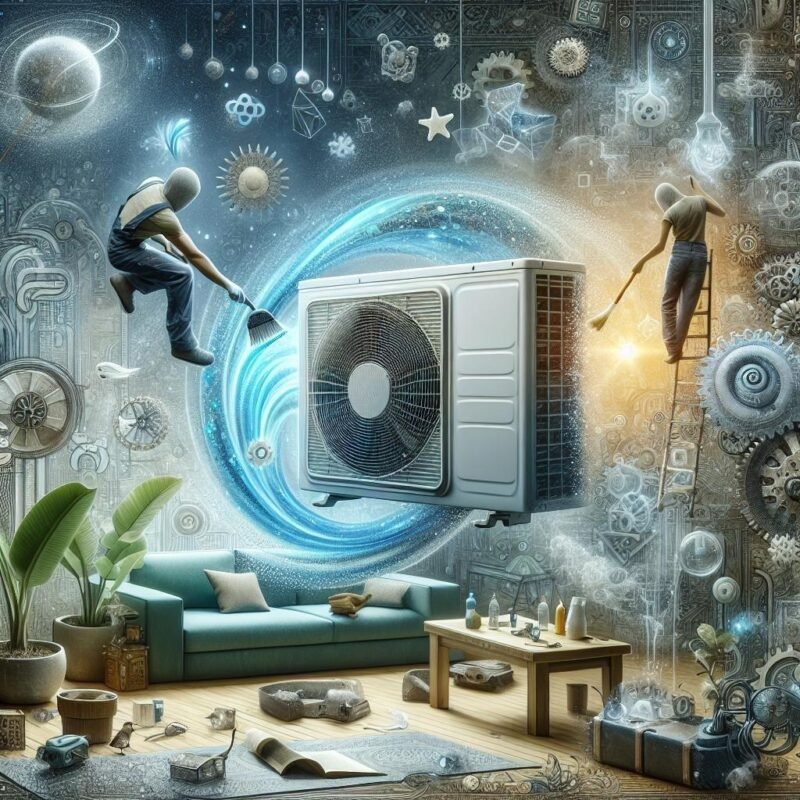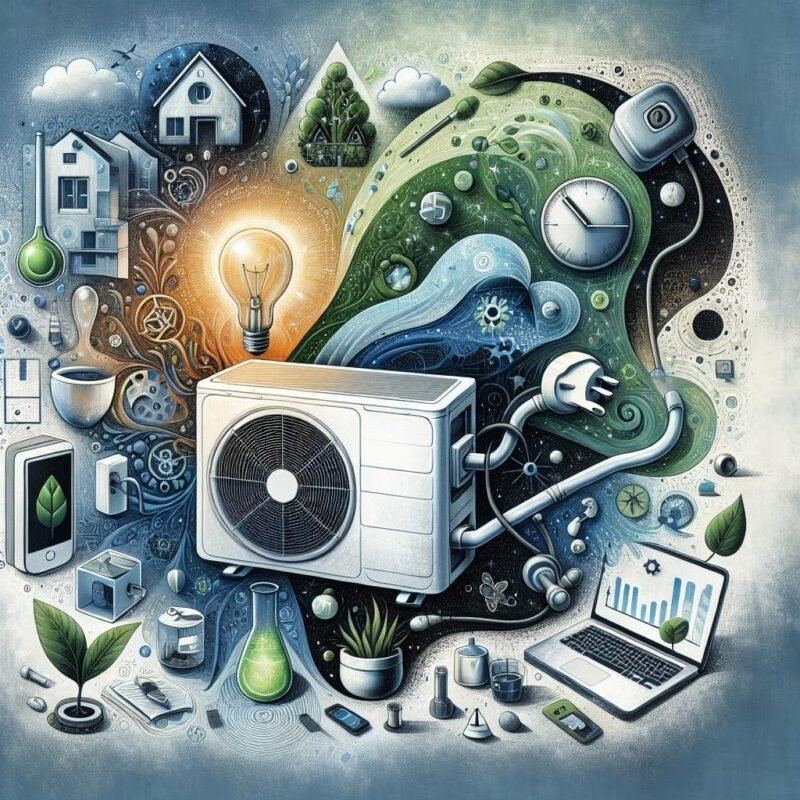Picture this: you’re snuggled up on yoru couch during a chilly winter evening, sipping hot cocoa, and relying on your trusty mini split AC system to keep you warm. While these sleek,modern heating solutions have taken the world by storm with their energy efficiency and convenience,they’re not exactly the fairy tale heating solution some might have you believe. like that friend who seems perfect until you really get to know them, mini split systems come with their own set of quirks and limitations that might make you think twice before committing. Let’s peel back the curtain and explore the not-so-rosy side of using mini splits for heating,because sometimes what looks good on paper isn’t always what’s best for your home sweet home.
The Hidden Energy Costs of Mini Split heat Pumps in Extreme Cold
While modern mini splits claim remarkable efficiency ratings, they can become surprisingly power-hungry when temperatures plummet below freezing. The system’s supplemental electric resistance heating kicks in more frequently during these bitter cold snaps, leading to unexpected spikes in your electricity bills. Many homeowners don’t realize that their seemingly efficient heat pump might consume as much power as traditional electric heating when struggling to extract heat from frigid air.
The real energy impact frequently enough shows up in two key ways:
- Continuous defrost cycles that interrupt heating to prevent ice buildup
- Extended run times at maximum capacity to maintain indoor temperatures
- Higher compressor workload causing increased wear and power draw
- Reduced overall system efficiency as outdoor temperatures drop
| Temperature Range | Efficiency Drop | Power Usage |
|---|---|---|
| 32°F to 20°F | 25-30% | Moderate |
| 20°F to 5°F | 40-50% | High |
| Below 5°F | 60-70% | Extreme |
when Mini Splits Struggle: Performance issues During Winters Worst Days
Even the most advanced mini split systems can face challenges when temperatures plummet below freezing. as outdoor units battle frost buildup and work overtime to extract heat from frigid air, you might notice your indoor comfort levels taking a hit. The system’s heating capacity typically drops between 25-40% once temperatures fall below 5°F (-15°C), leading to longer running times and potentially higher energy bills during extreme cold snaps.
Cold climate performance varies significantly across different brands and models, with some key factors affecting their winter operation:
- Frost accumulation on outdoor coils
- Reduced heating output in sub-zero temperatures
- Increased defrost cycle frequency
- higher energy consumption during extreme cold
| Temperature Range | Performance Impact |
|---|---|
| 32°F to 5°F | moderate efficiency loss |
| 5°F to -13°F | Meaningful output reduction |
| Below -13°F | May cease operation |
Maintenance Headaches and Professional Service Requirements
While these systems are generally reliable, keeping them in top shape requires more than just changing filters. The outdoor unit needs regular cleaning to prevent debris accumulation, and the condensate drain line must be frequently checked to avoid clogs and potential water damage. The indoor unit’s coils demand periodic deep cleaning to maintain efficiency, and failing to do so can lead to reduced performance and higher energy bills. Even the most diligent DIY enthusiast might find these tasks challenging, especially when units are mounted high on walls.
Finding qualified technicians for repairs and maintenance can be surprisingly difficult, as not all HVAC professionals are experienced with mini-split systems. When issues arise, you’ll need to seek out specialists who understand these specific units, which often means higher service costs and longer wait times. Plus, replacement parts might not be readily available locally, potentially leaving you without heating during critical winter months.
- Annual professional maintenance recommended
- Specialized tools required for repairs
- Complex diagnostic procedures
- Limited availability of certified technicians
| Maintenance Task | Frequency | Skill Level |
|---|---|---|
| Filter cleaning | Monthly | DIY |
| Coil Cleaning | bi-annually | Professional |
| System Checkup | Annually | Professional |
Space Heating Limitations and cold Spots in Larger Homes
When dealing with expansive living spaces, mini splits can face challenges in maintaining consistent warmth throughout the entire area. A single indoor unit might struggle to push heated air into distant rooms,creating pockets of chilly discomfort in far corners and less-frequented spaces. This becomes particularly noticeable in homes with complex layouts, multiple stories, or architectural features that impede airflow, such as long hallways or high ceilings.
To combat these temperature variations, homeowners often find themselves needing to install multiple indoor units, which significantly increases both initial costs and complexity. Consider these common cold spot locations:
- Basement areas and below-grade rooms
- North-facing rooms with minimal sun exposure
- Spaces separated by long corridors
- Rooms blocked by large furniture arrangements
| Room Location | Temperature Drop | Solution Complexity |
|---|---|---|
| Main Living Area | 1-2°F | Low |
| Adjacent Rooms | 3-5°F | Medium |
| Remote Spaces | 6-8°F | High |
Q&A
Q&A: Potential Drawbacks of using a Mini Split AC for Heating
Q: What is a mini split AC, and why do people use it for heating?
A: A mini split AC is a versatile and energy-efficient system that can both cool and heat your space. It consists of an outdoor compressor/condenser and one or more indoor units. Many people are drawn to mini splits for their flexibility, ease of installation, and efficiency in temperature control — perfect for those who want to stay cozy during chilly months without breaking the bank!
Q: Sounds great! But are there any drawbacks to relying on a mini split AC for heating?
A: Absolutely, while mini split systems are fantastic in many ways, they do have some potential drawbacks when it comes to heating. Let’s break it down:
Q: What’s the first concern people might have?
A: One common concern is their performance in extreme cold. Mini splits can struggle when temperatures plunge below freezing, as their efficiency significantly drops in very low temperatures. If you live somewhere that regularly sees frigid weather, you may find yourself needing a supplemental heating source.
Q: Are there any upsides to that?
A: Indeed! A supplemental heat source like a traditional furnace can be an excellent safety net for those bitter winter nights. It ensures your home stays warm and cozy, allowing the mini split to do its thing without strain.
Q: What about installation and cost?
A: Great question! While installation can be easier than ducted systems, the initial cost can still be on the higher side, especially if you need multiple indoor units for an effective heating solution. If you’re on a budget, this is definitely something to consider before making a decision.
Q: Do these systems require a lot of maintenance?
A: Mini splits are generally low-maintenance, but they still require some regular care. Cleaning the filters and ensuring the outdoor unit isn’t obstructed by snow or debris is essential. If neglected, it could lead to performance issues or higher energy costs, which nobody wants!
Q: What about noise levels during operation?
A: Ah, yes! Mini splits are generally quieter than traditional furnaces, but the outdoor unit can produce some noise, especially during startup. If you’re sensitive to sound, it might be something to consider, particularly if the outdoor unit is close to your bedroom window.
Q: Can you sum up the biggest drawbacks for us?
A: Sure! To recap, the main drawbacks include:
- Reduced efficiency in extremely cold weather.
- Higher upfront installation costs.
- Ongoing maintenance requirements.
- Potential noise from the outdoor unit.
Q: Any final thoughts for readers thinking about a mini split for heating?
A: If you’re considering a mini split for heating, weigh these factors carefully. They’re a fantastic option for many, especially in moderate climates where they shine. Just be prepared with a backup plan if your winters are particularly frigid. as with any home investment, doing your research will help you find the right solution for your cozy sanctuary!
to sum up
As we draw the curtains on our exploration of the potential drawbacks of using a mini split AC for heating, it’s essential to remember that no system is without its quirks. While these versatile units offer impressive efficiency and the sweet promise of precise climate control, they may also present challenges worth considering—such as initial costs, noise levels, and their sometimes limited performance in extreme temperatures.
yet, like any good story, the choice between mini splits and other heating options hinges on your unique needs and circumstances. So weigh the pros and cons thoughtfully, and envision the ideal comfort for your home. finding the right heating solution isn’t just about technology; it’s about creating a cozy sanctuary that feels just right for you and your loved ones. Thanks for joining us on this journey into the world of heating solutions—stay warm,stay informed,and happy home-making!


